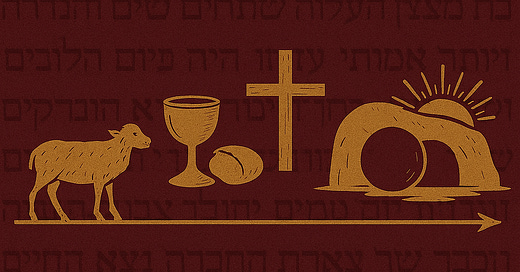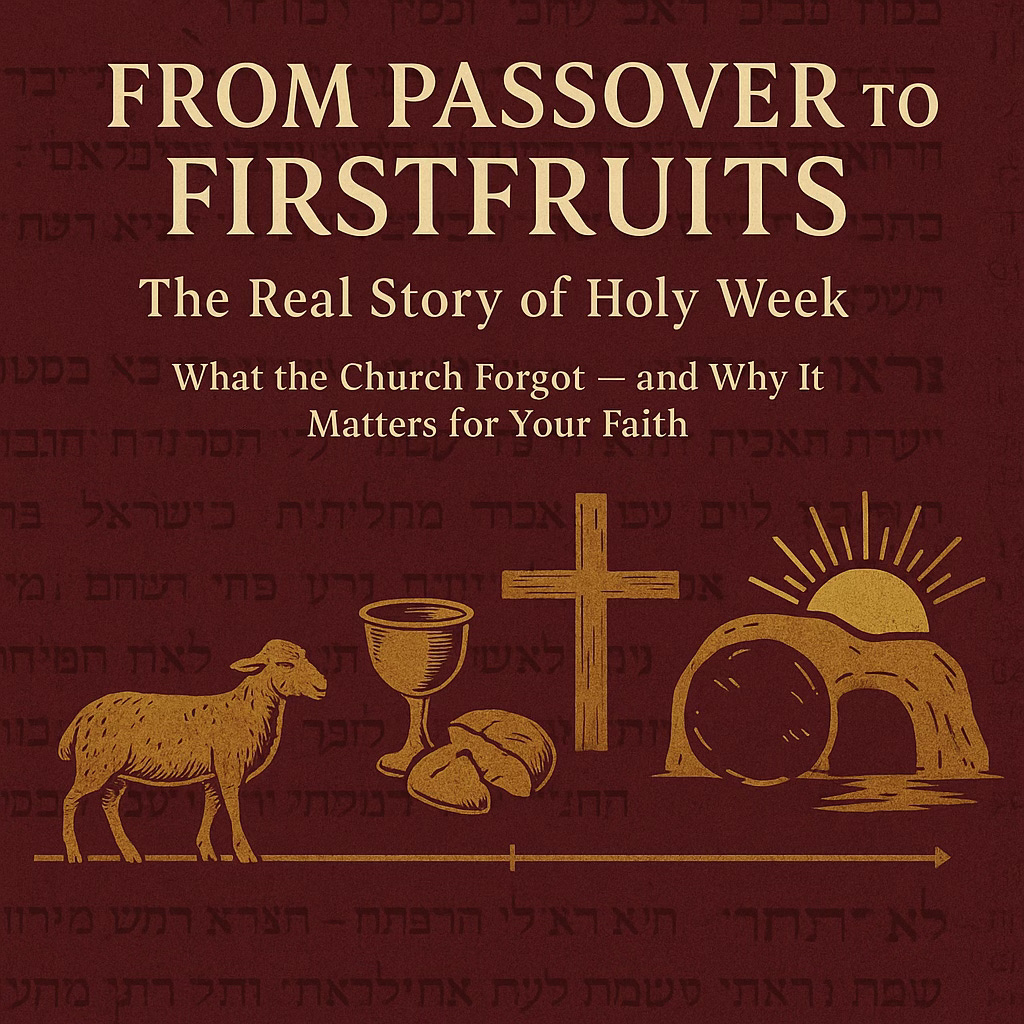From Passover to Firstfruits: The Real Story of Holy Week - Introduction
What the Church Forgot — and Why It Matters for Your Faith
Introduction
In this series, you’ll notice we use the names Yeshua (the Hebrew name for Jesus, meaning Yah saves) and Yahweh or Yah (God’s personal, covenant name in Scripture). These names return us to the original Hebraic context in which the Messiah lived—where prophecy, covenant, and appointed times are woven together with divine intention.
To recover the true timeline of Passion Week, we must return to the biblical calendar—and specifically to the month of Nisan, the first month of the Hebrew year. In Exodus 12:2, Yahweh declares:
“This month is to be for you the first month, the first month of your year.”
On the 14th of Nisan, each household was instructed to slaughter a Passover lamb, placing its blood on the doorposts. That lamb wasn’t random—it pointed directly to Messiah. And on that very same day, centuries later, Yeshua—the true Lamb of God—was crucified (see John 1:29).
But in the 4th century, Emperor Constantine sought to detach the resurrection from its Hebraic foundation. At the Council of Nicaea in 325 AD, the Church formally severed the resurrection from Passover, establishing a Romanized date that no longer aligned with Yahweh’s feasts.
“It was declared to be particularly unworthy... to follow the custom of the Jews... for the Savior has shown us another way.”
— Eusebius, Life of Constantine, Book III, Ch. 18
This decision didn’t just shift the calendar—it severed the resurrection from the very moedim (appointed times) it was meant to fulfill.
The Lamb and the Moedim
Yeshua didn’t simply die before Sunday. He fulfilled every element of the Torah with breathtaking precision. On Nisan 10, the day the Torah commands that each family choose their lamb (Exodus 12:3), Yeshua entered Jerusalem—publicly presenting Himself as the Lamb.
He was examined for four days—interrogated, tested, found without fault (John 18:38)—just as the lambs were watched for blemishes.
Then, on Nisan 14, at the very hour the lambs were being slaughtered (Exodus 12:6), Yeshua was crucified. As His blood poured out, He fulfilled every Passover that had come before.
That evening, Nisan 15 began: the Feast of Unleavened Bread, when Israel remembered their exodus from Egypt and removed all leaven—symbolizing sin—from their homes (Exodus 12:15). Yeshua, the sinless Bread from Heaven, was sealed in the tomb.
Then, as Nisan 18 dawned—at the close of the weekly Sabbath—Yeshua rose. It was the Feast of Firstfruits. The sheaf was lifted. The harvest had begun. As Paul later wrote, “Messiah has been raised... the firstfruits of those who have fallen asleep.”
When the Clock Was Changed
To fully grasp what happened during Passion Week, we must ask: What calendar are we following?
Most of the modern world uses the Gregorian calendar—a solar system with days beginning at midnight. But in Scripture, time moves differently. From Genesis 1:5, we learn that a biblical day begins at sunset, not midnight.
So when Yeshua shared the Last Supper after sunset, it wasn’t “Thursday night” as we understand it—it was already Nisan 14, the day of His crucifixion. The shift from Hebrew to Roman reckoning has compressed and distorted the timeline.
The moedim—Yah’s appointed times—were always rooted in the lunar-solar calendar of Israel (see Leviticus 23). But Constantine and the early Church rejected that calendar for political reasons—not theological ones.
“We ought not, therefore, to have anything in common with the Jews... for the Savior has shown us another way.”
— Eusebius, Life of Constantine, Book III, Ch. 18
By doing so, we traded Yah’s rhythm for Rome’s convenience. The result? A Friday crucifixion, a Sunday sunrise—and a timeline that doesn’t fulfill “three days and three nights in the heart of the earth” (Matthew 12:40).
Anchoring the True Timeline in Scripture
This isn’t about theories—it’s about text.
The Passion Week timeline is embedded in Scripture:
John 12:1 — Yeshua arrives in Bethany on Nisan 8
Exodus 12:3–6 — Lamb selected on Nisan 10
Mark 15:25 — Crucified at the third hour on Nisan 14
John 19:31 — Buried before the High Sabbath of Nisan 15
Matthew 12:40 — Three days and three nights
Matthew 28:1 — Tomb found empty after the Sabbath, not Sunday morning
This is not contradiction—it’s calibration. When Scripture is aligned with the Hebrew calendar, the pattern becomes clear. The Lamb was chosen, slain, buried, and raised on Yahweh’s schedule.
What We Lost — and What We Can Recover
By exchanging Yah’s calendar for Constantine’s, the Church didn’t just shift feast days. We lost the precision, the prophetic layers, and the awe embedded in every moment of that week.
But the good news? We can get it back.
This series will walk you day by day—from Nisan 8 to Nisan 18—to rediscover how every hour of Passion Week was a moed fulfilled.
Not just a tradition remembered.
A timeline redeemed.
A covenant completed.
Next Post: First Day - Nisan 8: The Arrival of the Lamb




